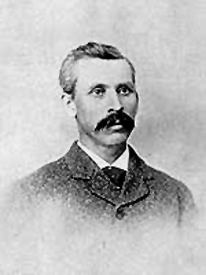 William H. Ashley? Probably Not
William H. Ashley? Probably Not Ashley was a member of only 3 to 4 fur trapping expeditions, but his business sense combined with what he saw on those expeditions convinced him of a new way to do business in the mountainous wildernesses of the Rocky Mountains. The rendezvous system he devised ushered in the “golden age” of Rocky Mountain fur trading. While not a mountain man himself per se, he did more to ensure that mountain men existed, and still hold sway in our consciousnesses today.
A Missouri Rise
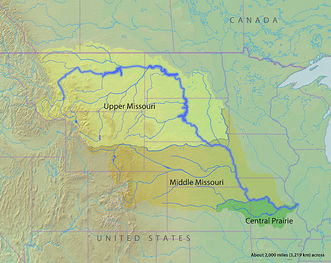 Regions of the Missouri River
Regions of the Missouri River He took an early interest in the Missouri state militia and rose steadily through its ranks, becoming a colonel by 1819. That position surely helped him secure election as the state’s first lieutenant governor in 1820. He eventually attained the highest rank in the state militia, that of brigadier general by 1822.
Serving as Missouri’s lieutenant governor proved to be of little challenge to a man of Ashley’s abilities, and he quickly began looking for business opportunities. Ashley was indicative of the rising class of frontier businessman that was forming after the Louisiana Purchase and the areas opened up by the Lewis and Clark expedition. There were many ways to make money in the west, and Ashley most likely chose fur trading because it seemed the most promising in 1820. So in 1822 Ashley and old friend and business partner Andrew Henry formed the Rocky Mountain Fur Company.
The Rocky Mountain Fur Company
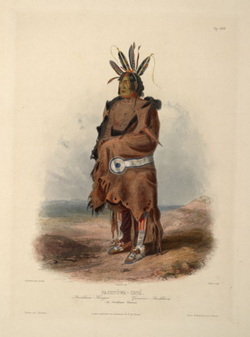 "An Arikara Warrior" by Karl Bodner, 1840-3
"An Arikara Warrior" by Karl Bodner, 1840-3 And it wasn’t difficult to draw young men into the fur trade. On September 17th, 1822, the St. Louis Intelligencer ran a story which detailed how men working in the fur trade had “increased their capital and extended their enterprises.” The article went on to report that “a thousand men” were currently working the upper reaches of the Missouri, and another 500 on the Mississippi. The fur trade was booming, and many a young man wanted to cash in.
Three initial expeditions were ordered, the last led by Ashley himself. And they proved anything but promising. The expedition led by Daniel Moore saw a keelboat overturn, losing all of its cargo, an immediate $10,000 loss. That conducted by Henry saw further Blackfeet attacks, resulting in the death of four men.
The next year things didn’t fare much better when Arikara Indians attacked the seventy men Ashley led up the Missouri. He lost twenty-four men in the attack, and used the power of his office to call in the 6th US Infantry commanded by Colonel Henry Leavenworth. Andrew Henry’s men came downriver, as well as Joshua Pilcher’s men from the Missouri River Fur Company. 700 Sioux Indians also allied with the mountain men and soldiers for the fight, and on August 9th, 1823, a combined force of more than 1,000 attacked the Arikara villages.
The Arikara Indians were allowed to abandon the villages on the night of August 14th, their threat to the growing fur trade seriously diminished. The incident would become known as the Arikara War, and it was the first time that the US government directly attacked the western Indian tribes, setting the stage for future conflicts with the Crow and Blackfeet.
Developing the Rendezvous
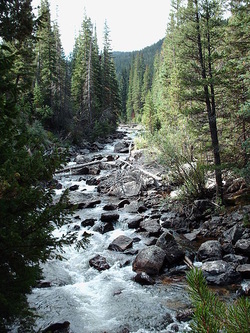 Cache la Poudre River
Cache la Poudre River Ashley also lost his bid for reelection as Missouri’s lieutenant governor in 1824, so he had more time to focus on the fur trade, and when Andrew Henry decided to head back to the mines that same year, Ashley was in the position to profit immensely. He led an expedition up the Green River that fall and made it as far as South Platte of the Rocky Mountains by November, and wintered around Colorado’s Cache la Poudre River in February 1825. He and the men travelled about and trapped, and then met up at the pre-determined rendezvous point around McKinnon, Wyoming, up Henry’s Fork on the Green River. The meeting would net Ashley over 9,000 furs.
Cashing Out
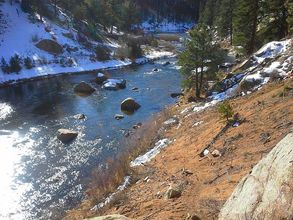 South Platte River
South Platte River Not one to sit on his laurels and bask in retirement, Ashley again revved up his political ambitions. When Spencer Pettis was killed in a duel in 1831, Ashley was tapped to fill his seat in the US House of Representatives. He proved popular, and was re-elected twice, but declined to run for a fourth term and stepped down in 1837.
The reason was simple: his tenure as lieutenant governor until 1824 was still on his mind, and he meant to rectify his earlier loss. He didn’t, and lost badly in the general election that fall. Many in congress, including Ashley, were seen as increasingly pro-business, and this didn’t sit well with many of the rural Jacksonians of the state who leaned more toward the plight of the common working man.
Ashley’s heath had been in decline since he left office in 1837, and he died on March 26, 1838. He was 60 years old.
Billington, Ray Allen; Ridge, Martin. Westward Expansion: A History of the American Frontier. No Publisher Listed, 2001. p 98-100.
Carter, Harvey L. “William H. Ashley.” Mountain Men and Fur Traders of the Far West: Eighteen Biographical Sketches. Hafen, LeRoy R. (ed.) University of Nebraska Press: Lincoln, 1965. p 79-90.
Chittenden, Hiram Martin. The American Fur Trade of the Far West [Vol 1]. University of Nebraska Press: Lincoln, 1986. p 246-9.
Gowan, Fred R. Rocky Mountain Rendezvous: A History of The Fur Trade Rendezvous 1825-1840. Gibbs Smith: Layton, 2005. p 12-20.
Malone, Michael Peter; Roeder, Richard B.; Lang, William L. Montana: A History of Two Centuries. The University of Washington Press, 1976. p 48.
Neihardt, John G. The Splendid Wayfaring: Jedediah Smith and the Ashley-Henry Men, 1822-1831. State University of New York Press: Albany, 1948. p. 31-47.
Rodriquez, Junius P. The Louisiana Purchase: A Historical and Geographical Encyclopedia. ABC-CLIO, Inc.: Santa Barbara, 2002. p. 17.

